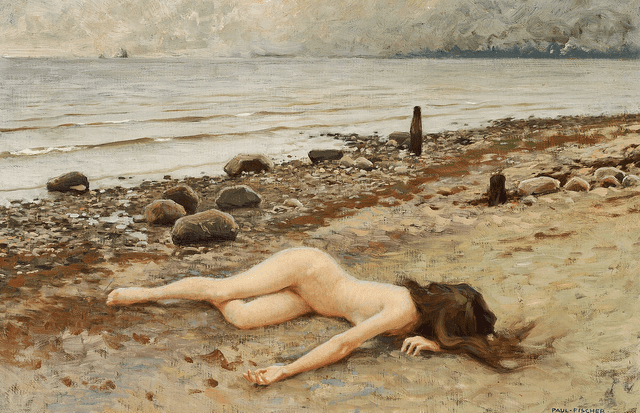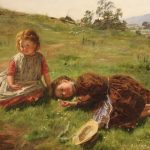
Paul-Gustave Fischer (1860–1934) was a Danish painter, known for his contributions to Danish art at the turn of the 20th century. His work captures the vibrancy of Copenhagen and Danish life through a variety of subjects, including cityscapes, landscapes, genre scenes, and portraits. Fischer’s paintings are characterized by their vivid depiction of everyday life, marked by a keen observation of light and atmosphere, which places him among the notable Danish impressionist and realist painters of his time.

Born in Copenhagen, Fischer was part of an artistically inclined family, which provided a nurturing environment for his early interest in art. Despite the lack of formal training in his early years, Fischer demonstrated a natural aptitude for painting, which led him to pursue a career as an artist. His early work was influenced by the Danish Realist movement, focusing on the accurate depiction of reality, but as his style evolved, he began to incorporate impressionistic techniques, particularly in his treatment of light and color.

Fischer was fascinated by the bustling urban life of Copenhagen, and many of his paintings depict the city’s streets, squares, and daily activities of its inhabitants. His urban scenes are lively and filled with detail, offering a glimpse into the social fabric of his time. He had a particular talent for capturing the changing seasons and various times of day, imbuing his cityscapes with a sense of mood and atmosphere that reflects the transient nature of light.

Aside from urban scenes, Fischer also painted serene landscapes, tranquil beach scenes, and intimate interior settings. His travels throughout Denmark, Europe, and North Africa broadened his horizons and influenced his use of color and light. Fischer’s beach scenes, often featuring sunbathers and seaside leisure activities, are noted for their light-heartedness and vibrant light, showcasing his ability to capture the luminosity of the outdoors.

Fischer’s portraits and genre scenes reveal his interest in the human figure and the individual’s place within society. His works often depict women engaged in everyday activities, presented with sensitivity and an eye for the beauty of the mundane. Through his genre scenes, Fischer provides insight into the cultural and social dynamics of his time, with a particular focus on the middle class.
Despite his considerable talent and the quality of his work, Fischer did not gain the same international recognition as some of his contemporaries. However, his contribution to Danish art remains significant. His paintings are celebrated for their depiction of Danish life and culture, and his impressionistic approach to light and color has earned him a respected place in the annals of Danish art history.

Today, Paul-Gustave Fischer’s work is held in high esteem, with pieces displayed in museums and collections in Denmark and abroad. His art continues to be appreciated for its vibrant depiction of life, capturing moments of beauty and significance in the everyday. Fischer’s legacy lies in his ability to convey the spirit of his time through the medium of paint, offering future generations a window into the life and atmosphere of early 20th-century Denmark.







